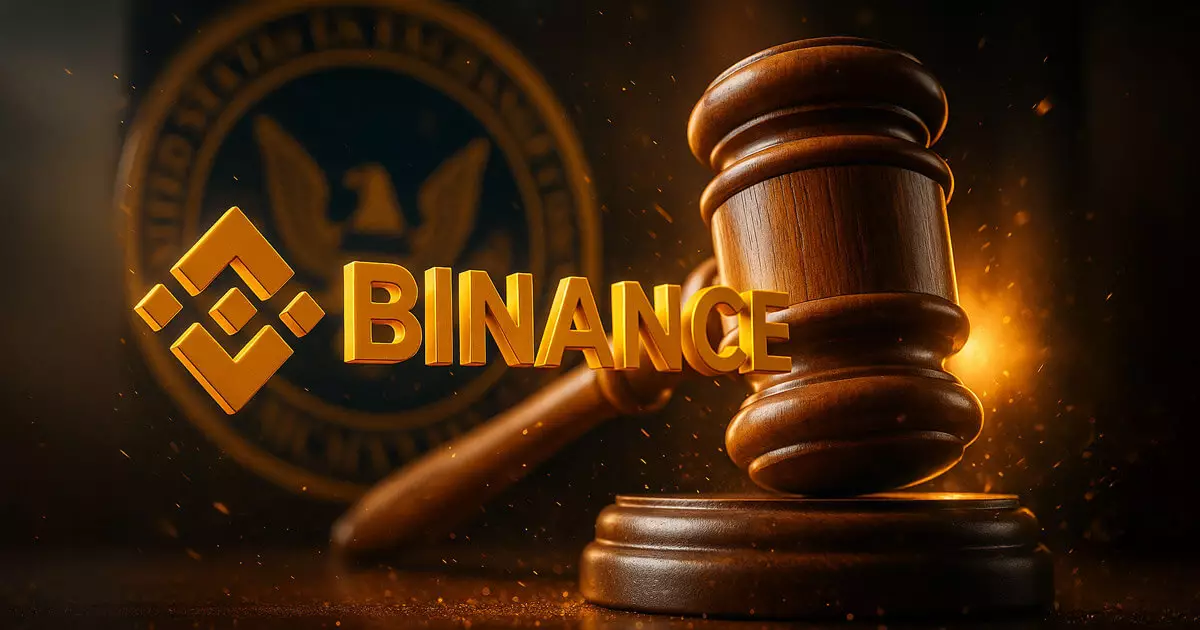In a striking turn of events, the US Securities and Exchange Commission (SEC) has recently requested a federal judge to dismiss its civil complaint against Binance and its founder, Changpeng Zhao, also known as ‘CZ.’ What was initially framed as an arduous litigation journey has morphed into a rather abrupt cessation of hostilities. The entire episode begs the question: did the SEC truly evaluate its strategic approach to regulating cryptocurrencies, or was it simply a reactionary institution trying to maintain relevance in a rapidly evolving digital landscape?
The SEC’s decision to halt its complaint against Binance comes after a significant 60-day contemplative pause imposed by Judge Amy Berman Jackson. According to reports, this pause was prompted by discussions surrounding a new SEC crypto task force helmed by Commissioner Hester Peirce. The notion that this task force could somehow clear the fog surrounding the existing securities rules for digital-asset platforms is promising yet inherently flawed. If regulatory bodies were truly invested in nurturing innovation in the cryptocurrency sector, why would they ever approach innovation with regulation by enforcement as their primary tactic? Regulatory bodies need to shift their focus from punitive measures to strategic collaboration that will help build a safer digital space.
A ‘Win’ for Crypto or a Retreat for Regulators?
The SEC’s dismissive stance towards its lawsuit against Binance has been celebrated by the crypto community as a resounding victory for the sector. Binance framed the dismissal as a resurrection of U.S. innovation, crediting the decision to push back against regulatory overreach spearheaded by the so-called “Trump team.” Yet, it’s vital to scrutinize whether this moment actually denotes a genuine turnaround in regulatory philosophy or simply a tactical withdrawal prompted by infrastructural inadequacies within the SEC.
The notion that the SEC’s case has been “dismissed” may come across as liberatory for proponents of cryptocurrency, but it’s not without its contradictions. Binance remains bound to earlier consent agreements mandating transparency surrounding customer assets and custodial controls. Rather than a full exoneration, this dismissal feels more like a temporary respite, a patchwork solution to an ongoing regulatory conundrum that lacks clarity and direction. The financial ecosystem demands an unbiased conversation, one free of political undertones, yet here we stand, knitting together solutions in haste without addressing the underlying issues that plague regulatory practices.
The Fundamental Failures of the SEC’s Approach
The SEC’s original complaint accused Binance of behaving like an unregistered securities exchange, inflating trading volumes through deceptive practices and ultimately misleading investors. Yet, the agency seems to have fundamentally misunderstood the nuances of digital assets, opting to employ traditional regulatory frameworks – such as the Howey test – to a landscape that continually challenges those very definitions.
By failing to recognize the unique attributes of digital assets, the SEC reveals its instability as a regulatory entity. The complaint’s allegations, including claims of wash trading and misappropriation of customer assets, raised important questions about ethics and legality in the crypto space. However, as traditional financial institutions grapple with their own scandals, it strikes one as particularly ironic that the SEC chose this moment to extend its reach into a financial arena that is still struggling to define itself.
What Lies Ahead for Binance and the Crypto Future
With the case officially on the backburner, it’s reasonable to assume that the SEC has faced significant pressure from an evolving landscape that is becoming increasingly resistant to antiquated regulatory frameworks. Binance’s cooperation with earlier consent orders signifies a willingness to adapt, but will it be enough to ensure future compliance amid an ongoing series of investigations? Future enforcement actions are likely, which puts the entire crypto ecosystem on edge.
As the narrative surrounding Binance and the SEC unfolds, it’s pivotal that we reflect critically on the path ahead. Will regulatory bodies take the lessons from this experience to foster an environment that is supportive of innovation or will they continue to chase shadows, enforcing rules meant for a bygone era? The dismissal of this case looks like a step back, but it could also represent an opportune moment to reshape a future defined by collaboration rather than cautionary tales of regulatory fallout.
If anything, the saga between Binance and the SEC has drawn a clear line in the sand – one where innovation inevitably clashes with outdated regulations. The time has come for a paradigm shift, a move from wary oversight to proactive engagement. In the nebulous realm of cryptocurrency, it’s innovation that must take the lead, not regulation trailing behind.















